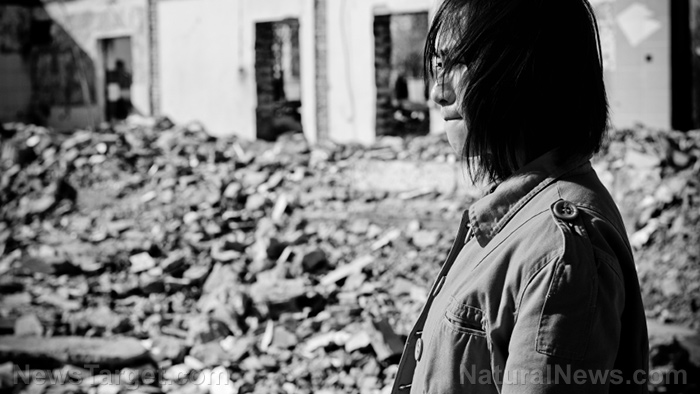Massive volcano eruption now imminent in Tanzania… the “Mountain of God” is set to blow
10/03/2017 / By Rhonda Johansson

Geologists warn that Tanzania’s most active volcano, Ol Doinyo Lengai, will erupt in the very near future. Archaically known as the “Mountain of God” by the Maasai people, Ol Doinyo Lengai will “explode imminently” and “poses a significant threat” to the surrounding areas, as reported on TheSun.co.uk. Scientists believe that an eruption could effectively obliterate key sites in human history, including a patch of land that shows footprints left by our ancestors 3.6 million years ago.
Ol Doinyo Lengai towers over the Tanzanian landscape at 2,331 meters and is located only 70 miles from invaluable historic sites. One of these is a portion of dried volcanic ash that has impressions of footsteps made by five members of the Australopithecus afarensis species. These early hominins are best known by the fossil skeleton “Lucy.” Scientists describe this footprint site as priceless.
Unfortunately, this site is at risk of being lost forever, should Ol Doinyo Lengai explode. The possibility of this happening is likely, claim geophysicists who have been observing the volcano’s activity since the start of this year. Data from their sensors showed that portions of the volcano were lifting upwards — concrete evidence of an impending eruption, they say. Dr. Sarah Stamps, one researcher studying Ol Doinyo said on DailyMail.co.uk, “Several subsequent signals were also seen in real-time with additional on-the-ground observations by our local technician. These signals prompted rapid responses by our team to install three new real-time stations.”
Dr. Stamps said that these new sensors recorded ever-increasing activity within Ol Doinyo, suggesting an imminent explosion. “Imminent in our case means in one second, in a few weeks, a couple of months, or a year or more,” she said. “There are increased ash emissions, earthquakes, uplift at small volcanic cones, and an ever widening crack at the top of the volcano on the west side. These are all signs of volcanic deformation that will likely lead to an eruption sooner rather than later.” (Related: Report: Supervolcano that could kill millions of Europeans ready to blow.)
Another key site in danger is what archaeologists call the “dance hall.” Again, this is a portion of dried ash which shows pre-human footprints; but this time, at least 400 such tracks were recorded. Analysis of the rock showed that these impressions were made between 10,000 and 19,000 years ago. Scientists are still uncertain why so many homo sapien footprints are in this specific piece of land, but its historic value cannot be overestimated. No other site in Africa has as many impressions as the “dance hall.”
The damaging effects Lengai could have would increase if the eruption coincided with the heavy rain season. Geologists have argued that large debris could be swept away by the wind and rain and pummel these historic landmark sites into non-existence. Alternatively, the debris could prompt avalanches within nearby areas, covering the sites with volcanic mud.
On Ol Doinyo Lengai
The “Mountain of God” is the only active volcano in the East African Rift valley. It is also the only volcano in the world to spew out natrocarbonatite lava, which is one of the rarest kinds of magma ever to be recorded by science. More interestingly, Ol Doinyo oozes lava with the lowest-known temperature known to man, at only 950 degrees Fahrenheit. The last time Ol Doinyo erupted was in 2007. This eruption emitted earthquakes which could be felt as far away as Nairobi, Kenya.
Sources include:
Tagged Under: active volcano, Earthquakes, historic site, human history, imminent disaster, Mountain of God, natural disaster, volcanic eruption, volcano, weather




















